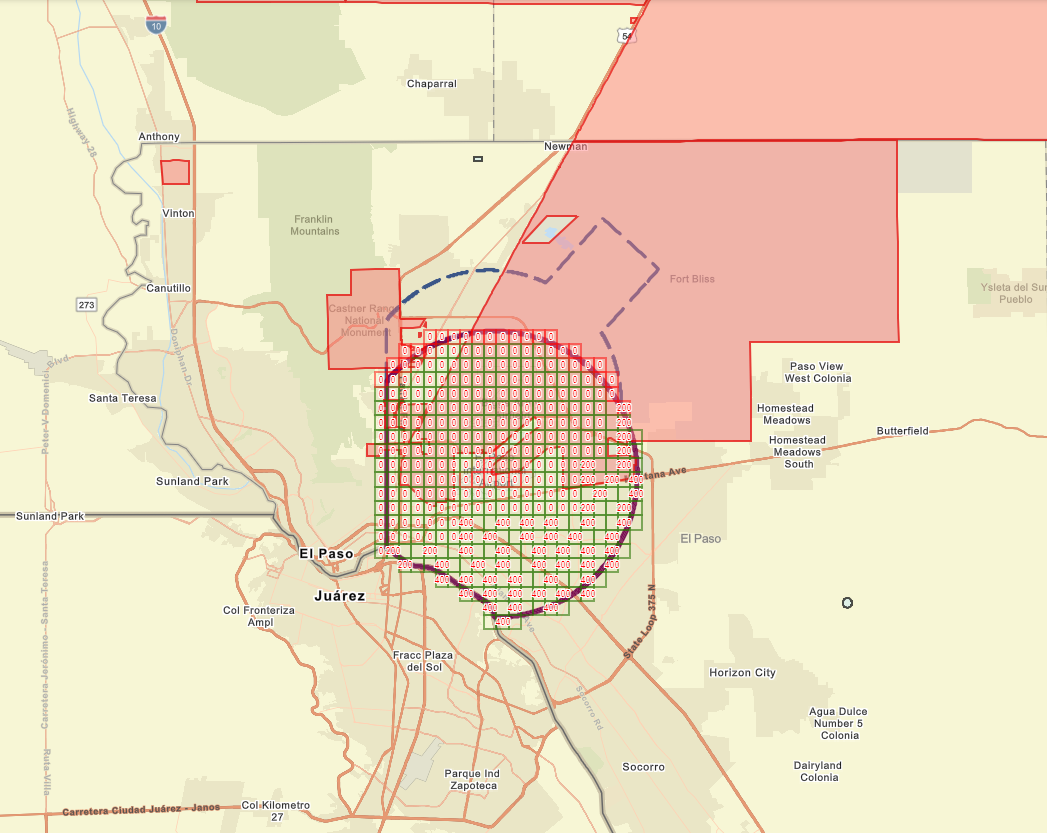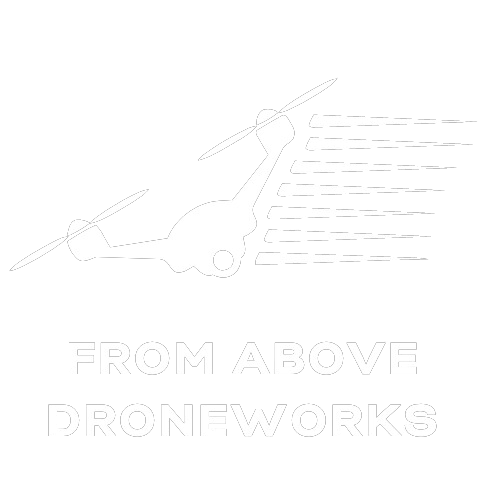Registering Your Drone? Follow These Steps
How to Register Your Drone and Stay Legal

Flying a drone is an exciting way to see the world from a whole new perspective, but before you take off, there’s one important thing to do: register your drone. If you’re feeling a little overwhelmed by the FAA registration process or unsure about local rules, don’t worry—you’re not alone! If you’re a first-time flyer or a commercial operator, this guide is here to make things simple. We’ll walk you through everything you need to know, from registering your drone with the FAA to understanding Texas and El Paso-specific rules, like no-fly zones. By the end, you’ll have all the tools you need to fly confidently, safely, and legally. Let’s get started!
Why Drone Registration Is Important
FAA Compliance Requirements
Registering your drone with the Federal Aviation Administration (FAA) is essential to fly legally and safely. All drones weighing between 0.55 and 55 pounds must be registered, regardless of use. The process is straightforward and can be completed through the FAA Drone Zone for a small fee. Recreational flyers can register quickly, while commercial operators will need to complete Part 107 certification as part of their registration. Compliance with FAA rules helps ensure responsible flying and prevents incidents in shared airspace. Failing to register can result in steep fines and penalties, so it’s a step you don’t want to skip. By following these requirements, you contribute to safer skies and maintain the integrity of U.S. airspace.
Avoiding Fines and Legal Issues
Registering your drone isn’t just paperwork—it’s a legal requirement that helps you avoid hefty fines and serious consequences. The FAA enforces strict penalties for unregistered drones, including civil fines up to $27,500 and potential criminal penalties, such as additional fines or imprisonment. Proper registration, along with clearly labeling your drone and complying with Remote ID requirements, ensures your drone is easily identifiable in flight. Remote ID acts like a digital license plate, providing critical information to authorities about your drone and its operator, which is essential for airspace safety. In Texas, and particularly in El Paso, where no-fly zones are closely monitored, understanding and following local drone laws is crucial. Ignoring these regulations could result in your drone being confiscated or your flying privileges suspended. By registering your drone, meeting Remote ID standards, and adhering to the rules, you not only avoid legal trouble but also contribute to a safer flying environment for everyone.
Who Needs to Register a Drone?
Weight and Usage Requirements
Recreational pilots must also complete TRUST (The Recreational UAS Safety Test), a simple online test designed to educate drone operators on safe flying practices. For commercial operators, additional compliance with Part 107 is required, which includes passing a more comprehensive knowledge test.
Recreational vs. Commercial Operators
Drone operators fall into two categories: recreational and commercial. Recreational pilots fly drones for fun and need to register their drone if it weighs between 0.55 and 55 pounds. Registration is easy—just visit the FAA Drone Zone, pay a small fee, and follow safety guidelines.
Commercial pilots use drones for work, like real estate or photography. They need to register their drone, label it, and pass a knowledge test to get Part 107 certification.
Understanding your category helps you follow the rules, avoid fines, and fly legally. These steps make it safe and simple for everyone to enjoy drones.
Step-by-Step Guide to Registering Your Drone
Gather the Required Information
Before registering your drone, make sure you have everything ready to make the process quick and easy. Start by finding your drone's make, model, and serial number, which you can usually locate on the drone or in its manual. Check the drone’s weight to confirm it meets the FAA registration requirements (between 0.55 and 55 pounds).
You’ll also need a valid email address and a credit or debit card to pay the small registration fee on the FAA Drone Zone website. If you’re a commercial operator, decide if you’re registering as a business and ensure you’re prepared for Part 107 requirements.
By gathering all this information beforehand, you’ll avoid errors or delays and can complete the registration smoothly. Once registered, you’ll be ready to fly legally and safely!
Create an Account on the FAA Drone Zone
Registering your drone starts with creating an account on the FAA Drone Zone, the official website for all drone registration activities. Go to the FAA Drone Zone website, click the option to register, and enter your email address to set up an account. After verifying your email, fill in your personal details like your name and contact information. If you're a commercial operator, include your business details as needed.
This account will serve as your central hub for managing drone registrations, renewing them, and staying compliant with FAA regulations. Once your account is set up, follow the on-screen instructions to register your drone. The process is simple and ensures you're fully compliant for both recreational and commercial flying.
Complete the Registration Process
Once your FAA Drone Zone account is set up, you can proceed to the registration process. Start by selecting the option to register a drone, and then choose whether it is for recreational or commercial purposes. You'll need to enter your drone's make, model, and serial number. Be prepared to pay a registration fee, typically using a credit or debit card. The current fee is nominal, ensuring accessibility for all operators. After payment, you'll receive a registration number, which must be visibly marked on your drone as part of compliance with drone labeling requirements. This step is crucial to avoid fines and ensure that your drone can be identified if necessary. Once completed, print your registration certificate and keep it with you whenever you fly. This certificate is your proof of compliance with FAA drone registration rules and is necessary for legal drone operation.
Download and Label Your Drone with the Registration Number
Once your drone is registered, the next step is to download your registration certificate and label your drone with the assigned number. Log into your FAA Drone Zone account to access and download the certificate, which includes your unique registration number. Keep a printed copy of the certificate with you whenever you fly.
Label your drone by placing the registration number on the exterior where it’s easily visible. You can use a permanent marker, a label maker, or even an engraving tool. Make sure the label is durable and won’t fade or fall off during flight.
Proper labeling isn’t just about following FAA rules—it also helps identify your drone if it’s lost or involved in an incident. By completing this step, you ensure your drone is ready for safe and legal operation, even in areas with strict rules like El Paso.
Local Drone Laws and Regulations
El Paso-Specific Drone Rules

Flying a drone in El Paso comes with additional local regulations that go beyond federal guidelines. The city enforces no-fly zones to protect public safety, privacy, and critical infrastructure. Restricted areas include El Paso International Airport, Fort Bliss, hospital heliports, and areas along the U.S.-Mexico border monitored by U.S. Customs and Border Protection. Urban areas with dense populations may also have restrictions.
Before flying, check local maps or resources to identify these no-fly zones. Some parks and recreational areas, like Franklin Mountains State Park, may require permits or have specific drone restrictions. It’s always a good idea to contact local authorities if you plan to fly in these areas.
Following these local rules helps you avoid fines, legal issues, or potential drone confiscation. Staying informed about drone laws in El Paso and across Texas ensures you can fly safely, responsibly, and within the law while enjoying the unique views this region offers.
Restricted Airspaces and No-Fly Zones
In addition to El Paso's local regulations, understanding restricted airspaces and no-fly zones is essential for safe and legal drone operation. These zones are designated around critical locations like airports, military bases, government facilities, and areas hosting large gatherings such as sports stadiums or public events. The FAA prohibits drone flights near stadiums during events, typically covering a radius of three miles and lasting from one hour before to one hour after the event.
Temporary flight restrictions (TFRs) may also be issued during public events, emergency operations, or natural disasters, and must be strictly adhered to. Violating these restrictions can result in severe penalties, including fines and legal action.
To ensure compliance, always check FAA tools like maps and mobile apps to identify restricted areas, and stay informed about updates through local authorities. By following these rules, you can enjoy flying while ensuring the safety and privacy of El Paso’s residents and public spaces.
Common Mistakes to Avoid During Drone Registration
Missing Deadlines or Renewal Dates
A common mistake drone operators make is forgetting to renew their registration on time. The FAA requires drone registrations to be renewed every three years, and flying with an expired registration is illegal and can result in penalties. To stay compliant, track your registration’s expiration date and set reminders to renew well in advance.
Renewing is simple and can be done through the FAA Drone Zone. Be sure your contact information in the FAA system is current, as they may send renewal reminders. Taking a proactive approach to managing your registration ensures uninterrupted legal drone operation and helps you avoid fines or complications. By staying on top of renewals, you contribute to safer and more responsible drone flying.
Incorrect or Incomplete Information
Providing incorrect or incomplete details during drone registration is a common mistake that can create unnecessary problems. Accurate information, including your personal details, the drone’s serial number, and specifications, is essential for a valid registration. Errors or omissions can cause delays or result in an invalid registration, which could lead to legal consequences if you fly the drone.
To avoid this, double-check all information before submitting your application on the FAA Drone Zone. If you notice a mistake after submission, contact the FAA promptly to make corrections. Keeping a record of your registration details can help resolve issues quickly. Providing complete and accurate information ensures a smooth registration process and keeps you in compliance with FAA regulations, allowing for worry-free drone operation.
FAA Drone Zone and Official Guides
If you’re flying a drone, the FAA Drone Zone is your one-stop shop for everything you need to stay legal and informed. This online portal makes registering or renewing your drone quick and easy. It’s also packed with helpful resources like guides on no-fly zones, airspace rules, and safety tips, so you can fly with confidence.
Thinking about using your drone for business? The FAA Drone Zone has tools to help you prepare for Part 107 certification, covering topics like weather conditions, emergency planning, and how to handle your drone safely in different situations.
By using the FAA Drone Zone and its guides, you’ll stay ahead of the game and avoid unnecessary headaches. Plus, it’s the easiest way to ensure your flights are both safe and compliant—whether you’re cruising over El Paso or exploring new skies.
El Paso International Airport Drone Guidelines
Flying a drone near El Paso International Airport comes with strict rules to ensure airspace safety. Operations are typically restricted within a five-mile radius of the airport unless you have prior authorization. To obtain clearance, drone operators must either contact the airport's control tower or use the FAA's Low Altitude Authorization and Notification Capability (LAANC) system, which simplifies approval for flights in controlled airspace.
However, if your intended flight falls within a Zero Grid area (where no pre-approved LAANC authorizations are allowed), you must file a detailed authorization request through the FAA Drone Zone. This process involves submitting flight specifics and awaiting approval from the FAA, which ensures safe integration of your drone operations with manned aircraft activities.
It’s also vital to stay updated on local airspace maps and temporary flight restrictions that could affect your plans. By following these protocols, drone operators help maintain safer skies and demonstrate responsible flying near critical infrastructure like El Paso International Airport.
Need Help? Contact Us!
From Above Droneworks Services for Drone Operators
Flying drones can be exciting, but the rules and requirements can feel overwhelming. That’s where we come in. From Above Droneworks is here to guide you through everything you need to fly safely and legally.
If you’re registering your drone, we’ll walk you through the process step by step. Confused about FAA rules or local flying restrictions in El Paso? We’ll help you navigate the regulations so you can take off with peace of mind. If you’re flying for work, we’ll assist with Part 107 certification and share tips to make your operations more efficient.
We also offer support for technical issues and advice to improve your drone skills. Our goal is to make sure you’re not just compliant, but confident every time you fly.
Conclusion
Taking the time to register your drone and learn the rules isn’t just about following regulations—it’s about making sure every flight is safe, legal, and worry-free. From navigating the FAA Drone Zone to understanding local laws in places like El Paso, these steps set the foundation for responsible drone operation.
Avoid common mistakes like missing renewal deadlines or entering incorrect information, and stay informed about the rules that apply to recreational and commercial pilots. Whether you’re flying for fun or work, knowing the guidelines keeps you in the air with confidence.
At From Above Droneworks, we’re here to make this process as easy as possible. Our team is ready to guide you through drone registration, compliance, and everything in between. Together, we can ensure your drone journey is smooth, safe, and rewarding. Let’s keep the skies safe—one responsible drone operator at a time.

